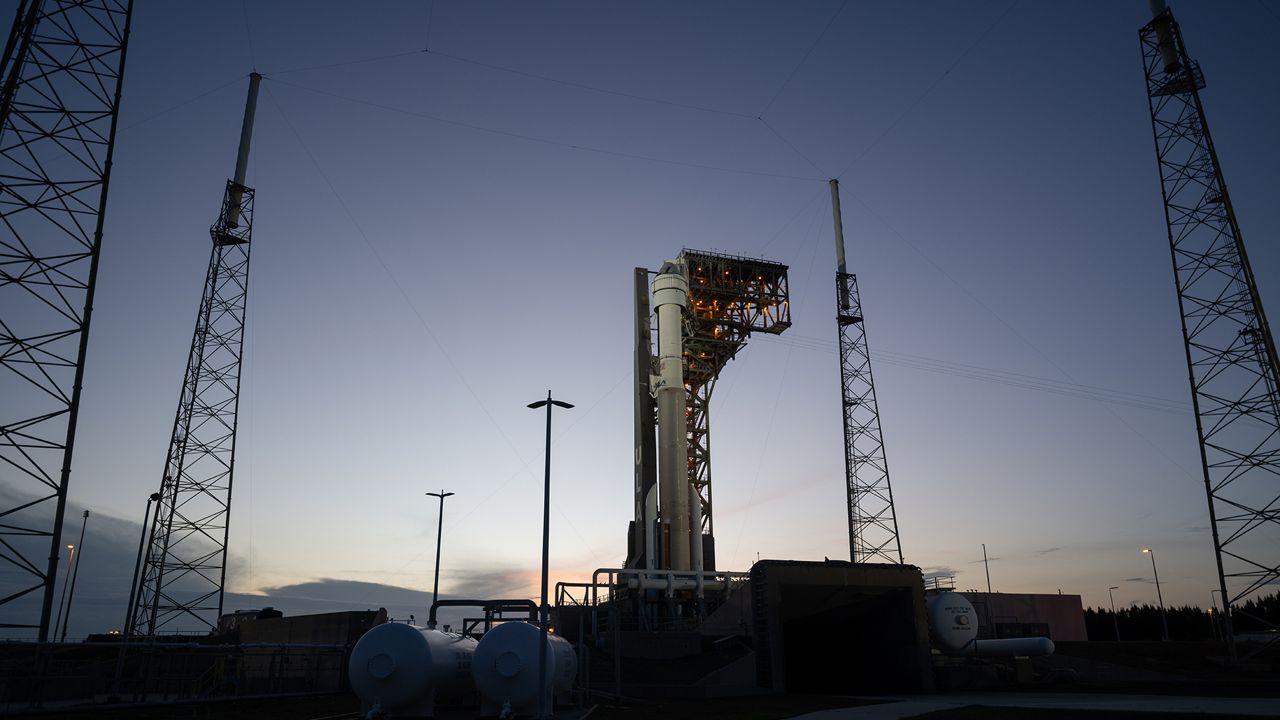CAPE CANAVERAL SPACE FORCE STATION — Despite a number of delays, NASA announced it has picked a new launch date for the maiden flight of Boeing’s Starliner.
What You Need To Know
- The new launch date is currently Saturday, June 01
- The mission has been plagued with problems
The Starliner will be launching Saturday, June 01, at 12:25 p.m. ET from Space Launch Complex-41 on Cape Canaveral Space Force Station in Florida, according to NASA in a Wednesday night announcement.
The U.S. space agency also stated there are other additional launch attempts that are being eyed: Sunday, June 02, Wednesday, June 05, and Thursday, June 06.
This comes as a series of delays has dogged the Boeing Crew Flight Test mission that will see a crewed Starliner send two NASA astronauts to the International Space Station.
One of the more troublesome issues that has grounded the mission is a small helium leak in the Starliner spacecraft’s service module that was detected days after the spacecraft’s first launch attempt on Monday, May 6.
In the new announcement, NASA stated that teams are still working on the problem.
“Work continues to assess Starliner performance and redundancy following the discovery of a small helium leak in the spacecraft’s service module. As part of this work, and unrelated to the current leak which remains stable, teams are in the process of completing a follow-on propulsion system assessment to understand potential helium system impacts on some Starliner return scenarios. NASA also will conduct a Delta-Agency Flight Test Readiness Review to discuss the work that was performed since the last CFT launch attempt on May 6, and to evaluate issue closure and flight rationale ahead of the next attempt, as part of NASA’s process for assessing readiness. The date of the upcoming Flight Test Readiness Review is under consideration and will be announced once selected,” NASA stated.
Officials with NASA, Boeing and United Launch Alliance, whose Atlas V rocket will launch the Starliner, will be holding a teleconference on Friday morning to provide more insight for the next launch.
The mission has been plagued with problems.
Attempting to take off
The launch of Starliner’s first crewed flight has seen a couple of setbacks, starting on the first launch attempt on Monday, May 6.
NASA astronauts Cmdr. Barry “Butch” Wilmore and pilot Sunita “Suni” Williams were sitting in the Starliner and waiting to be sent to the International Space Station, when the launch was called off before liftoff.
An issue with a pressure regulation valve on a liquid oxygen tank on the Atlas V rocket’s Centaur upper stage was discovered.
Both Wilmore and Williams are in quarantine in Houston until a new launch date is given and then they will fly back to Florida.
Boeing had planned for a second launch attempt on Friday, May 17, at 6:16 p.m. ET, but that was canceled after a small helium leak was detected in the Starliner’s service module.
There was hope that an attempted launch would take place on Tuesday, May 21, at 4:43 p.m. ET, but it was pushed back to Saturday, May 25, at 3:09 p.m. ET, so Boeing would have more time to assess the leak.
On Tuesday night, May 21, NASA issued a press release to say that the Saturday, May 25 attempt would be postponed.
“NASA, Boeing, and ULA are foregoing the Saturday, May 25 launch attempt for NASA’s Boeing Crew Flight Test. The team has been in meetings for two consecutive days, assessing flight rationale, system performance, and redundancy. There is still forward work in these areas, and the next possible launch opportunity is still being discussed,” NASA stated.
The Starliner spacecraft is still sitting on top of the Atlas V rocket at the Vertical Integration Facility at Space Launch Complex-41 on Cape Canaveral Space Force Station in Florida, after it was rolled back for repairs after the first launch effort.
This Starliner spacecraft named Calypso had issues before. During the first Orbital Flight Test in December 2019, while the launch went well, there was a glitch in the mission-elapsed timer that caused the spacecraft to go into an orbital insertion burn at the wrong time and used too much fuel.
This meant that while it was in a stable orbit, it could not make a rendezvous with the space station.
In 2014, Boeing received $4.2 billion from NASA to send people to the International Space Station. In that same announcement, NASA gave SpaceX $2.6 billion.
"The contracts include at least one crewed flight test per company with at least one NASA astronaut aboard to verify the fully integrated rocket and spacecraft system can launch, maneuver in orbit, and dock to the space station, as well as validate all its systems perform as expected. Once each company’s test program has been completed successfully and its system achieves NASA certification, each contractor will conduct at least two, and as many as six, crewed missions to the space station. These spacecraft also will serve as a lifeboat for astronauts aboard the station," NASA stated at the time.




